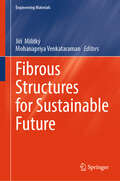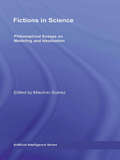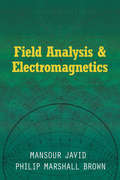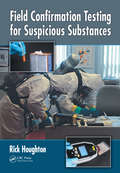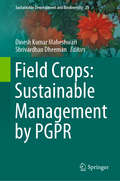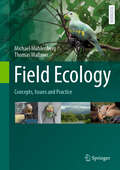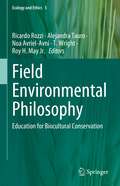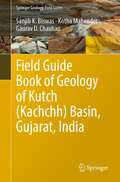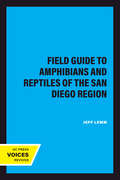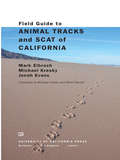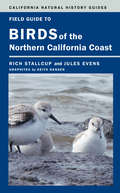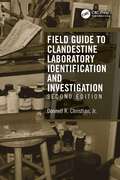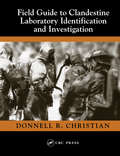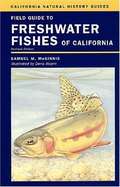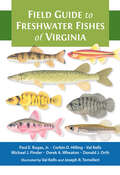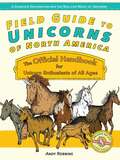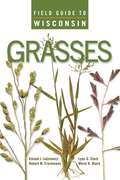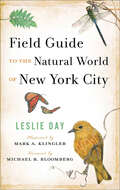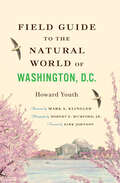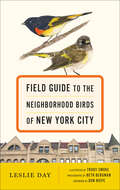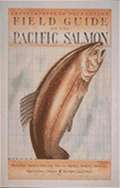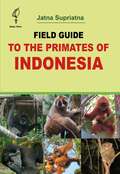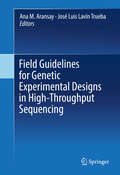- Table View
- List View
Fibrous Structures for Sustainable Future (Engineering Materials)
by Mohanapriya Venkataraman Jiří MilitkýThis book highlights and explains some topics of functionalized, less common (e.g., bio-based) fibrous structures creation, characterization of their properties, and their special applications. It comprises mainly some important but not widely known fibers such as bacterial cellulose, coir, banana, and mohair fibers of natural origin, bio-based fibers, and waste-based fibers (such as paper), more suitable for the future needs of the textile branch. The benefits of the preparation of synthetic fibers from natural-based monomers in comparison with fibers of natural origin are shown. The use of reprocessed and recycled fibrous wastes, leading to a reduction of consumption of resources, whether renewable or fossil, is covered as well. The modification of fibrous structures by bio-prepared metal nanoparticles is also discussed.
Fibrous materials
by Krishan K. ChawlaThis new updated edition provides an unrivaled overview of fibrous materials, their processing, microstructure, properties, and applications. The entire range of fibrous materials is discussed in depth, from natural polymeric fibers such as silk and vegetable fibers, and synthetic polymeric fibers such as aramid and polyethylene, to metallic fibers including steel, tungsten, Nb-Ti, and Nb3Sn, ceramic fibers such as alumina and silicon carbide, and carbon and glass fibers. Fundamental concepts are explained clearly and concisely along with detail on applications in areas including medicine, aerospace, optical communications, and recycling. Significant recent advances are also covered, with new information on the electrospinning of fibers, carbon nanotubes, and photonic bandgap fibers, and detail on advances made in the production and control of microstructure in high stiffness and high strength fibers. Accessibly written and unrivaled in scope, this is an ideal resource for students and researchers in materials science, physics, chemistry, and engineering. The only comprehensive introduction to the topic. Fully updated with new information on electrospun fibers, carbon nanotubes, and photonic bandgap fibers. Covers a range of applications in areas including medicine, aerospace, optical communications, and recycling.
Fictions in Science: Philosophical Essays on Modeling and Idealization (Routledge Studies in the Philosophy of Science)
by Mauricio SuárezScience is popularly understood as being an ideal of impartial algorithmic objectivity that provides us with a realistic description of the world down to the last detail. The essays collected in this book—written by some of the leading experts in the field—challenge this popular image right at its heart, taking as their starting point that science trades not only in truth, but in fiction, too. With case studies that range from physics to economics and to biology, Fictions in Science reveals that fictions are as ubiquitous in scientific narratives and practice as they are in any other human endeavor, including literature and art. Of course scientific activity, most prominently in the formal sciences, employs logically precise algorithmic thinking. However, the key to the predictive and technological success of the empirical sciences might well lie elsewhere—perhaps even in scientists’ extraordinary creative imagination instead. As these essays demonstrate, within the bounds of what is empirically possible, a scientist’s capacity for invention and creative thinking matches that of any writer or artist.
Field Analysis and Electromagnetics (Dover Books on Physics)
by Mansour Javid Philip Marshall BrownIntended for advanced undergraduates and graduate students in electrical engineering and physics, this text presents a science-oriented, mathematically complete, and unified approach to the study of field theory and electromagnetics. To facilitate a detailed development of the theoretical material, the authors reject the traditional historical "case study" approach in favor of the theory's logical development, followed by examples that illuminate facets of the theory. The book may be divided into three parts: field analysis, basic electromagnetic theory, and applications. Basic laws and concepts — along with their implications — are thoroughly discussed before detailed mathematical analysis is undertaken. In addition to rigorous treatments of all relevant derivations and proofs, appropriate emphasis is placed upon the physical significance of mathematical operations.
Field Confirmation Testing for Suspicious Substances
by Rick HoughtonFrequently a substance found at a port of entry, waste site, laboratory triage facility, or even in a hazardous materials emergency will be labeled and purportedly identified. But law enforcement and other first responders cannot take this claim at face value, as the accuracy is not confirmed and must be verified. A comprehensive handbook for on-th
Field Crops: Sustainable Management by PGPR (Sustainable Development and Biodiversity #23)
by Dinesh Kumar Maheshwari Shrivardhan DheemanThis book discusses the most challenging task ahead of researchers from India and around the globe: providing disease-free field crops for the ever-growing world population. In Asia, despite being cultivated in massive volumes, major crops, including cereals, oil seed, tuber and non-tuber vegetables, and fruit, are not meeting the demands of the increasing population. This book showcases naturally occurring beneficial microbes in the form of plant growth promoting rhizobacteria, or PGPR, which make it possible to grow field crops without applying synthetic chemicals.Our understanding of PGPR has increased exponentially in recent decades. They play a multifarious role in developing sustainable systems of crop production and protection. The book focuses on the mechanistic behaviors of PGPRs, their use to develop sustainable cultivation techniques, and their application to enhance crop growth and productivity at the cutting edge of tech-oriented agriculture and to replace hazardous chemicals with microbial inoculants. The book is useful to agronomists, microbiologists, ecologists, plant pathologists, molecular biologists, environmentalists, policy makers, conservationists, and NGOs working on organically grown field crops.
Field Ecology: Concepts, Issues and Practice
by Michael Mühlenberg Thomas WaßmerThis book is a theoretical and practical guide to ecological work in the field, focusing on concepts, issues, and practical applications in animal ecology. By highlighting examples, it provides students, researchers, and professionals with the tools to develop ecological questions and corresponding working hypotheses. It offers guidelines to choose the appropriate methods for successful data collection and analysis. The book focuses on methods for assessing biodiversity and habitats in a changing world, relating specifically to conservation issues and concerns. The book includes a Foreword written by Charles J. Krebs.
Field Environmental Philosophy: Education for Biocultural Conservation (Ecology and Ethics #5)
by Ricardo Rozzi Roy H. May T. Wright Alejandra Tauro Noa Avriel-AvniThis fifth volume in the Ecology and Ethics series integrates key concepts of the previous four volumes by addressing biocultural conservation through novel educational methods. In Field Environmental Philosophy (FEP), the authors undertake two complementary tasks. First, they address a problematic facet of education as an indirect driver of a global change and biocultural homogenization. Second, they contribute to solve the former problems by introducing the FEP method as well as other educational approaches from around the world that value and foster conservation of biological and cultural diversity. A particular emphasis is therefore on the integration of sciences, arts, humanities, and ethics into educational practices that involve the participation of local communities with their diverse forms of ecological knowledge and practices. The book is divided into four parts. Part I introduces FEP concepts and practices that involve a 4-step cycle of transdisciplinary research, poetic communication through composition of metaphors, design of field activities guided with an ecological and ethical orientation, and participation in biocultural conservation activities. Part II exposes problems as well as solutions in formal education (from preschool to higher education) and non-formal education to respect biocultural diversity. Parts III & IV provide case studies developed at long-term socio-ecological research (LTSER) sites, botanical gardens, and other platforms for non-formal education that contribute to biocultural conservation.This book supports a paradigm shift addressing still understudied indirect drivers of global change to foster the conservation of biological and cultural diversity. It is a valuable asset for scientists and practitioners in science and humanities education.
Field Guide Book of Geology of Kutch (Springer Geology)
by Sanjib K. Biswas Kotha Mahender Gaurav D. ChauhanThis book represents a detailed introduction to the geology, structure, and stratigraphy of Kutch Basin, known for its rich fossilized megafauna and the wide range of condensed sections exposing Bathonian to Pleistocene. With its vast assortment of geological features, geomorphology, and geoheritage, the Kutch Basin shows geology, stratigraphy, and paleontology almost as a textbook. Besides the beautiful illustrations given in the book, in the form of good field photographs depicting the landscape, and geological and geomorphological features, this guidebook serves as an inspiring reading reference. Furthermore, this guidebook will be a handy reference book for the tourists visiting Kutch Basin in planning their visit to explore the beautiful Kutch region. The guidebook is intended to interest scientists, researchers, students from schools and universities, tourists, and geoscience professionals of the mining and oil industry working in Kutch.
Field Guide to Amphibians and Reptiles of the San Diego Region (California Natural History Guides #89)
by Jeff LemmWith its varied topography of coast, mountains, and desert, the San Diego region, considered one of the world’s biodiversity hotspots, boasts a rich variety of amphibians and reptiles—from the arboreal salamander to the green sea turtle to the secretive San Diego banded gecko and the red diamond rattlesnake. More than a field guide, this up-to-date, authoritative, conservation-oriented book is the first comprehensive resource on the herpetofauna of the region, which is unfortunately also known for its high number of endangered species. Jeffrey M. Lemm gives information on identification, habitats, biology, and the conservation status of all 88 amphibian and reptile species found in the San Diego region. Many of these animals can also be found in a wide area of Southern California and Northern Baja California, making this valuable guide useful for a wide geographic area and a must-have for outdoor enthusiasts, nature-lovers, and professionals alike.* Includes a special venom section written by Sean Bush of Animal Planet’s "Venom ER" * 160 color photographs illustrate the major habitats and all 88 amphibians and reptiles found in the region* 70 range maps pinpoint the locations of each subspecies * A new, easy-to-use taxonomic key by renowned herpetologist Jay Savage as well as line drawings of tadpoles and amphibian egg masses help make species identification simple
Field Guide to Animal Tracks and Scat of California
by Jonah Evans Michael Kresky Lawrence Mark ElbrochSpotting an animal's fresh footprints in the wild can conjure a world for the hiker: Why did the deer tracks disappear? Where did the cougar turn off the trail? What does it mean when two sets of footprints seem to coincide? This beautifully illustrated field guide, the first devoted to the tracks and signs of California animals--including birds, mammals, reptiles, amphibians, and invertebrates like spiders and beetles--blends meticulous science with field experience to provide an engaging companion for both armchair exploration and easy field identification. Filled with useful tools for the wildlife expert, and essential background and visual aids for the novice, including in-depth information about the ecology of each species, this book goes beyond basic recognition of types to interpret what animals leave behind as a way of "seeing" how they move through the world.
Field Guide to Birds of the Northern California Coast
by Rich Stallcup Jules EvensThe Northern California coast--from Monterey County to the Oregon border--is home to some of the richest avian habitats on the North American continent. Field Guide to Birds of the Northern California Coast provides a comprehensive ecological overview of this extensive and diverse region. It features detailed discussions of the area's most common waterbirds, raptors, and landbirds and highlights the most productive birding sites in each Northern California coastal county. Accessibly written and user-friendly, this guide contains nearly 250 species accounts that focus on seasonal rhythms and behavioral characteristics of each species. More than 130 color photographs and hand-drawn sketches depict the birds in context, and maps and occurrence charts indicate when readers might spot each species.
Field Guide to Clandestine Laboratory Identification and Investigation
by Donnell R. Christian, Jr.Clandestine labs that manufacture drugs or explosives may be encountered virtually anywhere. They can range from complex operations employing scientific equipment and exotic chemicals or simply kitchen utensils and chemicals purchased at a local grocery or hardware store. Regardless of their form, the key to detecting clandestine labs is the ability to recognize the combinations of equipment and chemicals that constitute the lab in the first place. Te first line of defense against the manufacturers—who supply the drug trade and terrorists with their tools of destruction—is law enforcement, the fire services, and other emergency responders. Field Guide to Clandestine Laboratory Identification and Investigation, Second Edition provides the information necessary to recognize operations that produce these deadly brews. As with the prior edition, the book has sections covering the chemicals and equipment commonly used in the manufacture of drugs and explosives. They are grouped in a manner that allows the emergency responder to quickly identify common combinations of equipment and chemicals that could potentially be used to manufacture drugs or explosives. Since many clandestine manufacturing operations use commonly available materials that have legitimate uses, the author outlines how to quickly assess and recognize key indicators associated with clandestine laboratory operations. Sections within the book address information concerning both the hazards associated with those chemicals involved and the personal protective equipment needed to abate the hazards. In addition, documentation requirements, field-testing, and sampling procedures are detailed for use once the operation has been seized and secured. Reproducible worksheets are provided to be used either as, or to supplement, the on-scene investigators’ field notes and assist in providing a standardized manner to objectively record information about the crime scene. The ability to identify the tools used to manufacture contraband drugs and explosives is a key element in the battle against drug abuse and terrorism, making the Field Guide to Clandestine Laboratory Identification and Investigation, Second Edition an indispensible resource for responders and investigators alike.
Field Guide to Clandestine Laboratory Identification and Investigation
by Jr., Donnell ChristianThis book provides information for field use along with reproducible worksheets for crime scene investigators. It presents a list of the chemicals commonly encountered in clandestine laboratories and includes information about chemical hazards and the personal protective equipment required.
Field Guide to Freshwater Fishes of California (Revised Edition)
by Samuel M. McginnisThis book is a field guide to all of California's 130 freshwater fish species, both native and introduced. Revised and updated throughout, the guide features the complete collection of color illustrations of California freshwater fishes available anywhere. These color illustrations, coupled with a set of highly detailed black-and-white drawings, provide a quick and easy method for identifying fish in the field.
Field Guide to Freshwater Fishes of Virginia
by Corbin D. Hilling Valerie A. Kells Michael J. Pinder Derek A. Wheaton Paul E. Bugas Jr. Donald J. OrthA beautifully illustrated guide to the diverse and numerous freshwater fish species in Virginia.In Field Guide to Freshwater Fishes of Virginia, the foremost experts on Commonwealth fishes bring their decades of field experience to readers, offering a complete reference to the fishes of the entire state of Virginia. Gathering information that until now could only be found scattered across numerous reference works and online databases, this book provides everything you need to know to identify fish families and species in the Virginia region. Covering how to collect, handle, observe, conserve, and protect these unique fishes, the book's key features include • more than 175 vibrant, full-color illustrations, set side by side with descriptions of each fish• helpful line drawings that depict the most reliable diagnostic characteristics for field identifications (e.g., snout shape, pigment patterns, mouth morphology)• descriptions of Virginia's freshwater habitats • examples of incredible fish spawning and feeding behavior• tips on observing fish in the wild and in captivity• a chapter on the taxonomy of family and common names of the fish species most common throughout Virginia• up-to-date fish distribution maps• a complete glossary of termsProviding a fascinating foray into the wonders of the Commonwealth's swimmers, Field Guide to Freshwater Fishes of Virginia will appeal to scientists, naturalists, teachers, native fish aquarists, students, anglers, and fish collectors.
Field Guide to Unicorns of North America: The Official Handbook for Unicorn Enthusiasts of All Ages
by Andy RobbinsBecome an expert on the various species of North American Unicornus thanks to this fun, funny, and fascinating field guide!From historical details to identification strategies, you&’ll soon be immersed in the world of unicorns that roam the wilds of North America thanks to the scientific, "fact-packed" handbook. Plus, you&’ll learn easy, step-by-step drawing techniques for when you&’re out in the wild searching for signs of unicorn presence. Along with unicorn history, popular tales, and scientific information, you&’ll be provided with in-depth details about the most popular species of North American unicorns, including: • American Unicorn • Hoary Unicorn • Spiked Bog Pony • Tropical Unicorn • And more! This field guide is perfect for any lover of these fantastic beasts, no matter if they believe unicorns to be fact or fiction!
Field Guide to Wisconsin Grasses
by Lynn G. Clark Emmet J. Judziewicz Robert W. Freckmann Merel R. BlackGrasses are the foremost plant family of prairies, savannas, barrens, many agricultural landscapes, lawns, and successional habitats throughout Wisconsin, yet they are notoriously difficult to identify. This field guide to 232 species of Wisconsin grasses includes more than 1,100 illustrations. Setting a new standard as the first new, illustrated midwestern grass identification manual to appear since the 1960s, it provides up-to-date, comprehensive information for naturalists, gardeners, landscapers, nursery horticulturalists, community restoration professionals, agronomists and biologists, and any outdoors lover. The book includes: #149; species descriptions and distribution maps for all 232 species #149; more than 700 color photographs accompanying species descriptions #149; drawings of most species #149; chapters on grass morphology and grasses in natural communities #149; keys to all species, including an illustrated key to genera #149; a glossary of grass terminology.
Field Guide to the Natural World of New York City
by Leslie Day“This little gem fills you in on everything finned, furred, feathered, or leafed, and how to find it, in all five boroughs” (House and Garden).New York just might be the most biologically diverse city in temperate America. The five boroughs sit atop one of the most naturally rich sites in North America, directly under the Atlantic migratory flyway, at the mouth of a 300-mile-long river, and on three islands?Manhattan, Staten, and Long.Leslie Day, a New York City naturalist, reveals this amazing world in her Field Guide to the Natural World of New York City. Combining the stunning paintings of Mark A. Klingler with a variety of photographs and maps, this book is a complete guide for the urban naturalist?with tips on identifying the city's flora and fauna and maps showing the nearest subway stop.Here is your personal guide to the real wild side of America’s largest city. Throw it in your backpack, hop on the subway, and explore.“Dr. Day . . . A sort of Julia Child of nature.” —Ellen Pall, New York Times“Provides historic facts, photographs and maps to give a snapshot of the city’s natural resources and to remind hard-charging New Yorkers of the unchanging parts of their environment.” —Sally Goldenberg, Staten Island Advance“This book should be in every New Yorker’s library as both reference and inspiration for low-carbon-impact journeys to places of unexpected beauty and tranquility.” —Crawford-Doyle Booksellers Newsletter“You may well wonder why I am reviewing a book about New York city when we preach 'local, local, local' throughout these pages. I'll tell you, because this beautifully illustrated handbook is a wonderful example of exploring the bucolic city. . . . All illustrated with gorgeous watercolors by Klingler. We should have one of these. But in the meantime, you will find many of the same species in our fair cities., so why not pick up a copy for inspiration?”—Minneapolis Observer Quarterly
Field Guide to the Natural World of Washington, D.C.
by Howard YouthA field guide to plants and animals commonly found in the nation's capital.Winner of the Design and Effectiveness Award of the Washington PublishersNature awaits discovery at almost every turn in the complex ecosystem of Washington, D.C. In parks large and small, within the District's gardens, and on public streets, there is tremendous biodiversity. In Field Guide to the Natural World of Washington, D.C., naturalist Howard Youth takes us on an urban safari, describing the wild side of the nation's capital.Beyond the abundant wildlife that can be seen in every neighborhood, Washington boasts a large park network rich in natural wonders. A hike along the trails of Rock Creek Park, one of the country’s largest and oldest urban forests, quickly reveals white-tailed deer, eastern gray squirrels, and little brown bats. Mayapples, Virginia bluebells, and red mulberry trees are but a few of the treasures found growing at the National Arboretum. A stroll along the Potomac and Anacostia Rivers might reveal stealthy denizens such as bullfrogs, largemouth bass, and common snapping turtles. Detailed drawings by Carnegie artist Mark A. Klingler and photography by Robert E. Mumford, Jr., reveal the rich color and stunning beauty of the flora and fauna awaiting every D.C. naturalist.Whether seeking a secluded jog or an adventurous outing, residents and tourists alike will find this handsome guide indispensable for finding oases away from the noise of the city.
Field Guide to the Neighborhood Birds of New York City
by Leslie Day Don RiepeNew York City's favorite naturalist is back with a guided tour of the Big Apple that unveils the beautiful birds living in its midst.Winner of the Hardcover Nonfiction (Design) of The New York Book Show, Illustrated Text of the Washington PublishersLook around New York, and you’ll probably see birds: wood ducks swimming in Queens, a stalking black-crowned night-heron in Brooklyn, great horned owls perching in the Bronx, warblers feeding in Central Park, or Staten Island’s purple martins flying to and fro. You might spot hawks and falcons nesting on skyscrapers or robins belting out songs from trees along the street. America’s largest metropolis teems with birdlife in part because it sits within the great Atlantic flyway where migratory birds travel seasonally between north and south. The Big Apple’s miles of coastline, magnificent parks, and millions of trees attract dozens of migrating species every year and are also home year-round to scores of resident birds. There is no better way to identify and learn about New York’s birds than with this comprehensive field guide from New York City naturalist Leslie Day. Her book will quickly teach you what each species looks like, where they build their nests, what they eat, the sounds of their songs, what time of year they appear in the city, the shapes and colors of their eggs, and where in the five boroughs you can find them—which is often in the neighborhood you call home. The hundreds of stunning photographs by Beth Bergman and gorgeous illustrations by Trudy Smoke will help you identify the ninety avian species commonly seen in New York. Once you enter the world of the city’s birds, life in the great metropolis will never look the same.
Field Guide to the Neighborhood Birds of New York City
by Leslie DayNew York City’s favorite naturalist returns with a guided tour of the beautiful birds living in the five boroughs.Look around New York, and you’ll probably see birds: wood ducks swimming in Queens, a stalking black-crowned night-heron in Brooklyn, great horned owls perching in the Bronx, warblers feeding in Central Park, or Staten Island’s purple martins flying to and fro. You might spot hawks and falcons nesting on skyscrapers or robins belting out songs from trees along the street.America’s largest metropolis teems with birdlife in part because it sits within the great Atlantic flyway where migratory birds travel seasonally between north and south. The Big Apple’s miles of coastline, magnificent parks, and millions of trees attract dozens of migrating species every year and are also home year-round to scores of resident birds.There is no better way to identify and learn about New York’s birds than with this comprehensive field guide from New York City naturalist Leslie Day. Her book will quickly teach you what each species looks like, where they build their nests, what they eat, the sounds of their songs, what time of year they appear in the city, the shapes and colors of their eggs, and where in the five boroughs you can find them?which is often in the neighborhood you call home. The hundreds of stunning photographs by Beth Bergman and gorgeous illustrations by Trudy Smoke will help you identify the ninety avian species commonly seen in New York. Once you enter the world of the city’s birds, life in the great metropolis will never look the same.“‘Take this guide wherever you go,’ [Day] implores readers in the introduction. And we hope many do, since it reveals a New York we long to see, the wild, beautiful city of birds known to Audubon, Chapman, and Griscom.” —Chuck Hagner, BirdWatching Magazine“An excellent guide for New York City residents. If you have any interest in the birds around you (and there are plenty of birds around you, even in NYC), this guide will really open your eyes.” —Birder's Library“Day’s deeply researched and richly illustrated Field Guide to the Neighborhood Birds of New York City will be indispensable to locals and tourists alike.” —Sierra“Will fill a niche for beginning birders and backyard watchers in the northeastern U.S.” —Choice“You don’t have to live in or be visiting New York to enjoy this book.” —Times Literary Supplement (UK)
Field Guide to the Primates of Indonesia
by Jatna SupriatnaThis primate field guide can be used to refer to information on each species, or it can be used to find which species exist on each island, as shown at the back of the book. A list of primates in Indonesia is provided with local, English, and scientific names. Once the name is identified the user can go to the description of the genus and species. Also given is the conservation status of each species except for the most recently described, whose status is not yet known. The information on each species' natural history, behavior, ecology, and where to see it in parks and/or forested areas outside parks is included. Field Guide to the Primates of Indonesia primate drawings are by Stephen Nash and photographs were donated by many of the author's friends from Indonesia and abroad.
Field Guidelines for Genetic Experimental Designs in High-Throughput Sequencing
by Ana M. Aransay José Luis Lavín TruebaHigh throughput sequencing (HTS) technologies have conquered the genomics and epigenomics worlds. The applications of HTS methods are wide, and can be used to sequence everything from whole or partial genomes, transcriptomes, non-coding RNAs, ribosome profiling, to single-cell sequencing. Having such diversity of alternatives, there is a demand for information by research scientists without experience in HTS that need to choose the most suitable methodology or combination of platforms and to define their experimental designs to achieve their specific objectives. Field Guidelines for Genetic Experimental Designs in High-Throughput Sequencing aims to collect in a single volume all aspects that should be taken into account when HTS technologies are being incorporated into a research project and the reasons behind them. Moreover, examples of several successful strategies will be analyzed to make the point of the crucial features. This book will be of use to all scientist that are unfamiliar with HTS and want to incorporate such technologies to their research.
